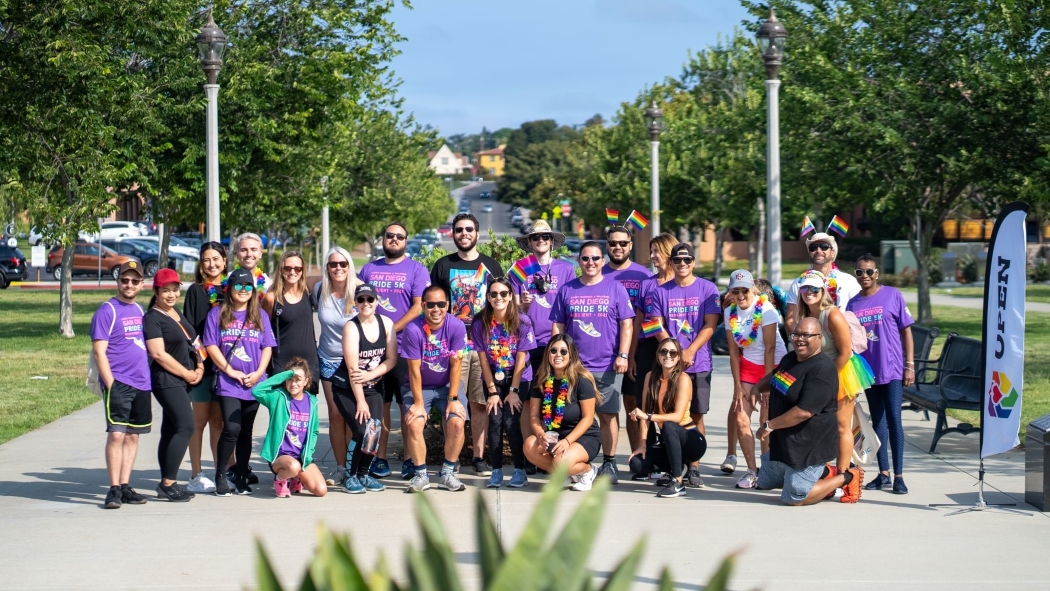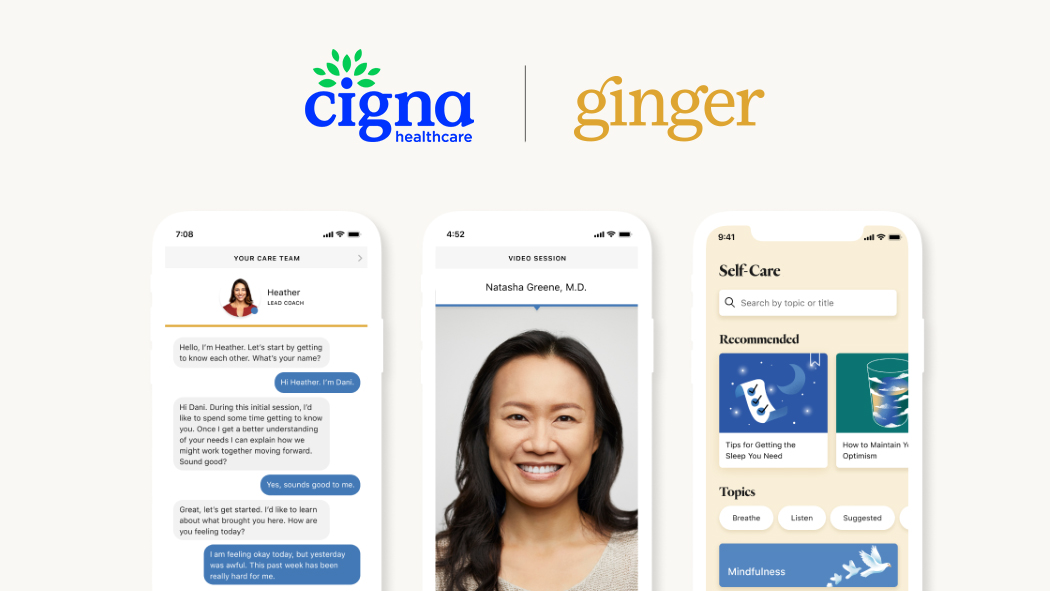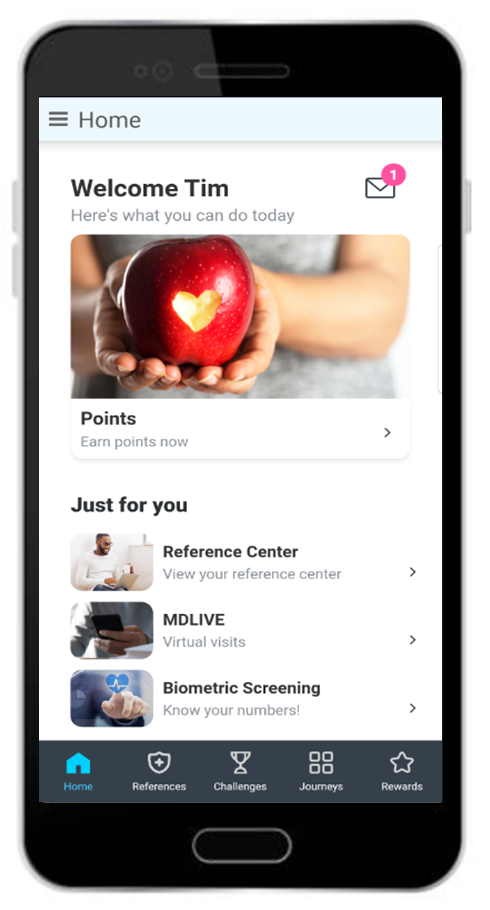Learn more about Cubic Corporation's award-winning health and wellness program, which focuses on four pillars of health and well-being: physical, emotional, financial and social.

A commitment to employee health and well-being is no longer just “nice to have.” It is mission critical for any organization looking to attract and retain top talent.
That’s a sentiment that was shared by Christy Carver, director of corporate benefits at Cubic Corporation, a global technology leader specializing in solutions in transportation and defense based in San Diego, California. According to Carver, Cubic is committed to investing in the health and well-being of its more than 5,000 employees across the globe.
“Our wellness program first started in the early 2000s, and it has changed and evolved quite a bit over the years,” Carver said. “It started with a modest budget, so we had to get really creative in how we were going to engage our workforce. Today, we’ve taken what started as a regional program to a global level, centering on holistic health and well-being and meeting our people where they are.”
Cubic’s wellness program focuses on four pillars of health and well-being: physical, emotional, financial and social. The company concentrates on one pillar each quarter, utilizing campaigns, communications and programming.
“We’ve learned that consistent messaging and programming is key,” said Lori Carson, senior benefits manager at Cubic. “Health and wellness is personal to every individual – so we place a great deal of focus on understanding our workforce and creating a wellness program that is accessible to all.”
Cubic was named one the Healthiest Workplaces in America in 2023 and took first place among companies of its size in the 2023 Healthiest Employers of Southern California awards. Let’s look at some of the wellness initiatives and strategies that have made those accolades possible.
A perfect match: Finding the right resources
Cigna Healthcare is the health insurance provider for Cubic’s workforce – and as part of that relationship, Cubic has its own health engagement consultant and dedicated well-being coordinator. Michele Nisly, a well-being coordinator at Cigna Healthcare, is assigned to the Cubic account. Her priority is to aid Cubic in engaging its employees in their health and wellness, and she runs the day-to-day programming and communications for the Cubic wellness program.
“Michele is with us every step of the way,” Carson said. “She works for Cigna, but her job is supporting us. Our wellness program would not be what it is today without Michele’s hard work, creativity and expertise.”
In fact, Cubic took part in the hiring process alongside Cigna Healthcare, and hand-picked Nisly for the role. “Michele is embedded into our team,” Carver said. “She’s helping us evolve the program, move it forward, all while making sure it’s resonating and accessible to all of our employees.”
Supporting employee mental health is a top priority for Cubic
According to Nisly, the pandemic really shone a light on mental health issues in the United States.
“Mental health challenges have always existed, but the pandemic brought them more to the surface,” she said. “We’re seeing that people are talking more about their mental health, as well as their need for more resources.”
For its part, Cubic offers employees behavioral health benefits through its employee assistance program. And as part of its Cigna plan, employees have access to an expanded network of virtual behavioral health providers available to help remove barriers to care in addition to in-person providers. An example of some of these great virtual providers are companies like Talkspace and Ginger, where users can get access to text or message therapy, coaching, and virtual or phone sessions with a provider. A core part of Cubic’s mental health strategy is communicating to employees about the benefits, programs, and tools that are available to them.

Cubic offers employees virtual mental health resources via Cigna Healthcare's partnership with Ginger
Worth noting is that Cubic employs many veterans. Research finds that 41% of veterans have a need for mental health care, and Cubic focuses heavily on veteran-specific resources. For example, the company has shared information for employees around PTSD support in the workplace. Through bite-sized, easy-to-consume content and experiences, the company is raising awareness among employees on regional resources, hotlines, and more support options for veterans.
Education on mental health and driving awareness is a top priority – and not just among those employees struggling with mental health. Cubic is hoping to turn interested employees into mental health advocates by offering educational content through videos, webinars, and other engaging digital formats. Cubic has also offered its U.S. workforce population a mental health first-aid certification course. This free, one-day class is offered through Cigna Healthcare and teaches participants how to recognize an individual who is experiencing a mental health crisis or problem and provide support until professional help is available.
“We all have a role to play in building a culture of health and well-being – a culture where mental health isn’t stigmatized, and we are all supporting one another,” Carver said. “The mental health first-aid certification helps us bring that type of culture to life by empowering our workforce to be mental health advocates.”
An emphasis on access and navigation
Carver pointed to some of the ways Cigna Healthcare has been a great partner in helping Cubic employees get the care they want and need. For example, Cubic found that many of its employees wanted access to more naturopathic doctors. “We were very pleased to find out that Cigna actually expanded their network to include more naturopathic doctors,” Carver said. “So they helped to solve for that, and it’s now something we can give our employees.”
Another way Cubic is improving access is by encouraging employees to use virtual care options in certain situations. Carson said that had been an easy sell. “For those times when you have a quick question or you can take a picture of a rash, for example, and provide it to the doctor, you don’t need to wait for an in-person appointment,” she said, adding that a telehealth appoint can be the more convenient option if you aren’t having a true medical emergency.
For employees living with a chronic condition, the Cubic team is excited that beginning in 2024 they will be offering employees access to the Cleveland Clinic network of doctors. Under the program, Cleveland Clinic, which is a non-profit multispecialty academic medical center that integrates clinical and hospital care with research and education, monitors and coordinates all aspects of an individual's medical care. Patients continue to see their current physician. A critical part of the program's benefits are registered nurses, employed by the Cleveland Clinic, who serve as clinical care coordinators and help patients with chronic conditions or other health challenges navigate the health care system.

Another way Cubic is helping its employees navigate the health care system and stay engaged with their health and wellness is through the CarePlus Mobile Health app, offered through McGriff Insurance (pictured left). The app is the one-stop-shop for all things wellness and benefits. The personalized experience guides and motivates users through incentives to engage with their own health, including connecting members to their mycigna.com account. Currently, 94% of Cubic’s workforce is registered on mycigna.com.
“It’s a great way for employees to navigate all the benefits, programs, and resources that are available to them, and integrated into the experience is a point system that gives incentives for completing healthy activities and preventive measures throughout the year,” Nisly said.
Finally, Cubic employees have access to Cigna Healthcare’s One Guide, which is a personalized concierge service. Users call a hotline to get help choosing the right care or understanding their plan and benefits.
Using data and analytics plus a wellness committee to better meet employee needs
Cubic relies on benefit utilization data to design and optimize its wellness program, Carver said. “We want to understand the highest concerns of our workforce, whether that’s musculoskeletal conditions or mental health challenges,” she said. Surveys have also been key to understanding employee awareness around benefits and their perceptions of various programming and plan offerings.
The Cubic team is also paying close attention to aggregate in-app data and data from the digital tools it offers to employees to better understand how engaged its workforce is in their health and wellness.
Another part of its strategy to better meet employee needs is a Wellness Committee. This cross-functional group of individuals comes together regularly to help shape and evolve the Cubic wellness approach. The one thing they all have in common? A passion for wellness.
With representation across multiple regions worldwide, the Wellness Committee helps identify employee needs and devises solutions on how to meet those needs. “The global approach with having a wellness champion in each region helps us make sure that we are prioritizing wellness in every part of the world that we operate in,” Carver said.

Wellness, mental health, and behavioral programs
Cigna Healthcare's wellness programs and behavioral health services can help your employees thrive.